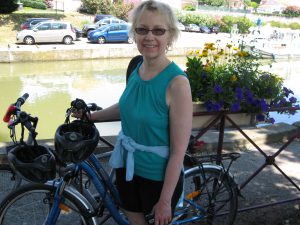The Physical Activity Guidelines Advisory Committee is composed of 17 nationally recognized experts in the fields of physical activity and health. These distinguished individuals agreed to serve on the Committee in a voluntary capacity to review current evidence and make recommendations that will help inform the next edition of the Physical Activity Guidelines for Americans. This post is part of a series of interviews with the Committee members to learn more about the men and women providing independent expertise and service to improve the health of the Nation.
Today, we are highlighting Dr. Anne McTiernan, a faculty member at the Fred Hutchinson Cancer Research Center and professor at the University of Washington Schools of Public Health and Medicine in Seattle, Washington. On the Committee, Dr. McTiernan serves as the Chair of the Cancer-Primary Prevention Subcommittee and as a member of the Individuals with Chronic Conditions Subcommittee.

What led to your interest in physical activity?
Growing up I was not physically active; there was no PE class in my school, and few opportunities for girls to play sports. Plus, my family told me that sports were unladylike. I first became active in college when I bicycled around Boston out of necessity—it was cheaper than public transportation. In 1994, I began to conduct research in physical activity after reading an intriguing paper that showed women who exercised regularly over their lifetimes had a reduced risk of developing breast cancer. That article inspired me to design clinical trials to test what happens biologically when a previously sedentary person becomes physically active.
Tell me about some of your recent research.
My research focuses on exercise, diet, obesity, and risk for cancer development and prognosis. In recent years, I’ve been looking at the effect of exercise and weight loss on what we call “biomarkers” of cancer. These biomarkers are things we measure in blood or other parts of the body that are part of the process of cancer development or spread. The research shows that exercise reduces several of these biomarkers, but the effect is greatest when combined with weight loss.
Explain your view of the role of physical activity in health.
Babies and children move constantly, without thinking, planning, or buying workout clothes. I believe we are pre-programmed to move, but modern life has made us sedentary. A physically active lifestyle has been linked to reduced risk of developing diseases like heart disease, diabetes, and cancer. And it improves prognosis and quality of life for persons living with chronic disease. The good news is that you do not need to become an athlete to enjoy these benefits of movement. Simple exercise, like brisk walking on a regular basis, can have significant health benefits.
If you had a magic wand to change one thing related to physical activity, what would you change?
I would make physical activity a national priority, changing our culture to make being active appealing. That would include building systems to promote activity, such as walkable communities. It would mean making school and work settings conducive to physical activity and allowing time to be active during the day. It would also put emphasis on the critical need for research on how exercise affects health, as well as on how to help people exercise to the best of their ability to improve their health.
~
The Office of Disease Prevention and Health Promotion would like to personally thank each of the members for their dedication and service on the Committee. The Committee’s independent review of the scientific literature is the result of thousands of hours of work and will culminate with the submission of the 2018 Physical Activity Guidelines Advisory Committee Scientific Report to the Secretary of the Department of Health and Human Services (HHS). HHS will use the report to develop the next edition of the Physical Activity Guidelines for Americans.